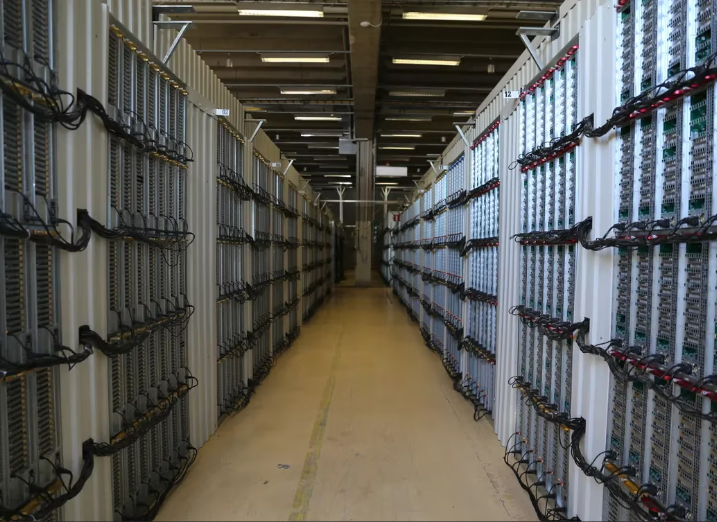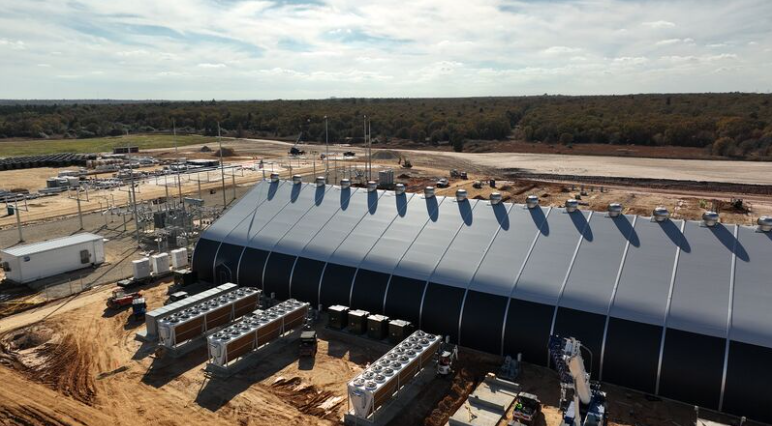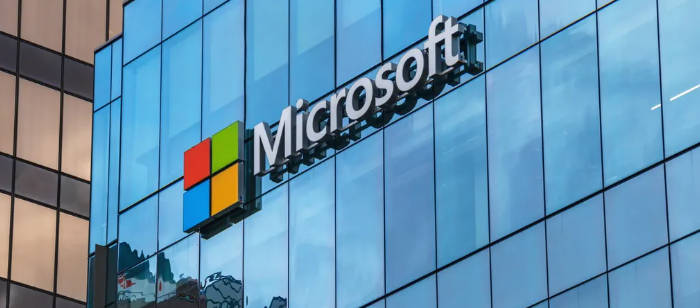The relationship between centralized power systems and climate change is fast becoming a hot topic of conversation and research. A problem this big is sure to receive a multitude of proposed solutions, such as distributed energy resources (DER), renewable energy sources, and blockchain peer-to-peer (P2P) energy trading. This guide will explain how blockchain is used in energy trading, including its platform, application, and impact.
The energy sector is faced with the significant problems of ever-increasing energy consumption, a sick planet, and ever-evolving technology. The blockchain solution is not, by itself, an immediate solution to these problems, but it has the potential to help. Blockchain is commonly associated with cryptocurrencies and Bitcoin miners, but it can also be used in the transactive energy market.
Application and Energy Trading
According to Dr. Hongbiao Li, et al., and their research on blockchain energy solutions, the centralized energy grid has several major problems. These include its power loss over long-distance transmissions and its low fault tolerance. The alternative to a traditional centralized system is a decentralized smart grid.
A decentralized smart grid is based on DER such as solar panels, windmills, and combined heat and power systems. DERs generate power locally, potentially solving power loss and fault tolerance issues. These technologies are developing rapidly, but they need a reliable platform for energy trading. Like any power generator, DERs would like to sell excess power and receive payment in a timely manner. Current energy trading systems were not designed for this type of decentralized network made up of small energy providers, so a new energy trading system is needed.
Blockchain platforms are fault tolerant, but some blockchains also support technology called a “smart contract.” This allows a simple energy purchase/sale contract to be represented in code and executed automatically on a blockchain-based trading system. This has the potential to significantly reduce energy trading transaction costs as well as settlement times. A decentralized smart network using blockchain technology could dynamically respond to supply and demand in near real time and deliver payments in a matter of minutes. Solving energy transaction problems can lower the cost of green energy, increase energy efficiency, combat climate change, and measure energy consumption and generation at a much more granular level than ever before.
Blockchain in a P2P Energy Trading System P2P trading
is the direct exchange of surplus electricity between two parties in a connected network. Blockchain offers a secure platform for P2P trading that tracks the transaction of assets, such as a unit of energy. Blockchain is a distributed ledger system that transparently stores data in a decentralized network. It is used to monitor transactions and track assets. Each block in the chain stores multiple transactions in a way that is easy to audit and verify, but very difficult to edit or change. When combined with smart contracts that automate the buying and selling of energy based on supply and demand, blockchain has the potential to be a very attractive solution for distributed energy companies. It could greatly simplify the process of buying and selling power and enable highly localized power generation. Existing energy companies can also participate, but they would have to adapt their existing technology and business plans.
One potential benefit of a P2P trading system is that energy consumers can choose where to buy their energy. For example, they could specify the type of energy source (renewable, etc.) and the type of company they buy from (independent, large, government, etc.). They can also see prices in real time, allowing them to make informed purchases. Since the system would be largely automated, the cost to the consumer could also be reduced by removing the “middlemen” of the “middlemen.”
Blockchain Trading and Renewable
Energy Solar power is one of the most common and accessible DERs. In a P2P trading system, people without solar panels could buy surplus renewable energy from their neighbors. A localized microgrid eliminates many of the inefficiencies of a monolithic centralized power generation system, as it can respond more dynamically to local needs. Local power generation also reduces power loss along transmission lines. DERs can lower costs, reduce waste, and protect the environment.
Renewable energies are frequently criticized for their dependence on specific conditions. Solar power needs daylight and windmills need wind. Blockchain trading provides a solution to these problems by making it much easier for those with surplus to be able to sell it to those who need it. When renewables cannot generate power overnight or on a windless day, microgrid participants can easily purchase power from other sources. Solar and wind power are the two best-known DERs, but biomass, geothermal, and hydropower are also sustainable forms of green energy that could benefit from blockchain trading.
Blockchain and Fossil Fuels
Blockchain has important applications for the renewable technology industry, but it is also applicable in the oil and gas industry. Dr. Hongfang Lu, et al., presented a review of blockchain in the oil and gas industry in 2019. They found that the upstream segment of oil and gas suffers from equipment tracking issues and data leaks, the midstream segment suffers from transactions erroneous and delayed, and the downstream segment suffers from integrity and security problems. Hongfang explained how the blockchain can improve the transparency of the upstream segment data, improve the efficiency of middle segment transactions and reduce costs, and enhance the security of the downstream segment data. In short, blockchain has significant benefits for large established power generators as well as new market entrants.
Blockchain and the Changing Energy Industry
With new and updated technology and increasing demand each year, energy markets are changing around the world. Australia is one of the most notable pioneers of renewable energy technologies, but it is not the only nation leading the charge in green energy and P2P commerce. Countries like Estonia, Spain, Malaysia, the United States and South Africa are investigating and applying new forms of energy transactions. Blockchain P2P trading has already seen several significant real-world success stories.
The Blockchain Solution in Research
It is not surprising that the relationship between blockchain and energy trading is becoming the subject of more and more research. One of the most successful examples of its potential was carried out by Dr. Esther Mengelkamp, et al., who created a microgrid in Brooklyn. Their research envisioned a communal power grid in which the grid is maintained by a traditional utility company, but power is produced, traded, and consumed by community members. This dual identity of consumer and producer is often referred to as a “prosumer.”
The Brooklyn Microgrid project found that blockchain is a suitable technology to operate a decentralized energy market. His research identified seven components necessary to build an efficient network. The Brooklyn microgrid fully satisfied three and partially satisfied another three. Current regulations prevented the seventh component from being met because P2P energy trading is not yet legal in the United States. Regulatory obstacles also exist in many other countries around the world.
The Blockchain Solution in Practice
Blockchain energy trading is not just an idea. It has already been used in several small-scale projects. WePower is a blockchain and electricity trading startup that put over a year of Estonian energy consumption and production data on the blockchain. Power Ledger, an Australian startup, creates microgrids that connect local green energy producers with new residential neighborhoods in a P2P energy trading system. This allows energy consumers to use renewable energy in a large country that is still heavily dependent on fossil fuels.
In Spain, two of the largest national energy companies are transitioning from a traditional centralized grid powered by fossil fuels to a decentralized blockchain platform. Spanish company Acciona Energy was the first utility to use blockchain to track its energy sources, thus increasing its transparency with the public. This is significant not only for its technological achievement, but also shows how traditional energy companies can adapt to a changing electricity market.
Blockchain and Electricity Trading
Blockchain is often used interchangeably with cryptocurrency, but cryptocurrency is simply one possible use case for blockchain. In fact, blockchain has been adapted to many industries outside of finance. Blockchain is used to store digital media property rights, land ownership, voting records, P2P insurance policies, and supply chain data. Dr. Khalimjon Khujamatov, et al., even studied the potential of blockchain-based 5G healthcare architecture. Considering the variety of these applications, it is not surprising that blockchain can be used as a decentralized data platform for the energy sector.
Drawbacks of Trading Electricity
The current state of trading energy is plagued by inefficiencies, caused by complex, often archaic intermediaries and processes. Blockchain could solve many of these problems by eliminating intermediaries and streamlining the collection of transaction data. Blockchain saves the buyer money by eliminating the need for intermediary fees. Blockchain offers solutions to almost every problem in the energy trading market, but that does not mean that it does not have its own problems.
Blockchain has support around the world, but like any new technology, it is often implemented more slowly than its proponents would like. And while the blockchain is more secure than traditional ledgers, it’s not immune to hacking. Other issues include anonymity and the link between digital and physical conveyances of value. Blockchain is also often seen as a disruptive technology due to the monumental impacts it has on almost every industry in which it is applied.
It is also important to consider the disruption to the business models of existing power producers. Large-scale power production usually results in very close government cooperation (and even outright government ownership in some countries). As a result, there is considerable regulation of the energy industry, and some of that regulation is not conducive to rapid change.
Benefits of Electricity Trading
Blockchain is well known for its transparency and security, but it also saves time. Blockchain platforms eliminate inefficient office practices like confirmations, volume updates, and many forms of reconciliation. In a P2P blockchain system, all parties would have access to the same transaction data. Transaction errors are costly and this system would improve efficiency and reduce costs.
Blockchain would also reduce credit risk, as there would be lower collateral requirements and longer settlement times. In short, there would be fewer human errors involved in the process. Blockchain essentially allows businesses to securely process more data with less time, cost, and risk.
Blockchain and The Participants in The Energy Sector
Blockchain is just one of the many moving parts of a decentralized electrical network. A decentralized network requires a framework of transactive energy, policy changes and DER. These components tend to complement each other. DERs are most useful to their owner when P2P trading allows them to sell surplus electricity, also known as net metering. However, regulations often prevent or limit net metering. A new regulation will need to be proposed to deregulate P2P commerce while protecting consumers. Currently, forty states in the US allow net metering, but these regulations change periodically.
Blockchain and Energy Companies
The energy sector is full of well-known legacy companies that have been around for decades, but the transactive energy market is full of new startups with great ideas. Both types of companies could thrive on a decentralized grid, which would offer a transactive energy framework that would lead to greater energy efficiency, lower costs, and more renewable energy.
This is possible without blockchain, but blockchain offers greater transparency and higher security than other types of ledgers. Technology like smart meters already provides consumers with information about their energy use, but a blockchain platform would store this information in a public and permanent way. In this way, consumers could see what other consumers are spending on energy, preventing anyone from being overcharged. It is not impossible to hack blockchain, but it is significantly more difficult since it uses a decentralized network. A hacker would need control of at least half the computers on a network to take control. This is a real threat to blockchain security, but researchers are finding solutions. Zexi Xing and Dr. Zhengxin Chen studied this attack and proposed a protection mechanism called block access restriction mechanism.
Blockchain and Energy Consumers
The myriad ideas for blockchain application in the energy sector are often highly speculative, such as P2P energy trading using existing cryptocurrencies. Energy consumers in a decentralized network would have more control over their energy sources, allowing them to compare costs. In addition to renewable energy certificates.
In contrast to speculative ideas like P2P trading, some renewable energy blockchain labs are attempting to address the challenges of running an increasingly decentralized power grid. As the grid becomes more decentralized, energy consumers gain more control over their electricity consumption. In an ideal microgrid, a residential consumer would exchange power to and from their neighbors, charging their electric vehicle, powering their home, and earning financial gain.













